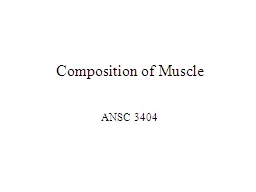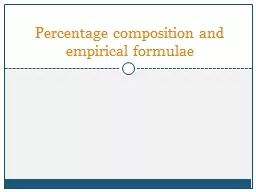PPT-Composition of Muscle
Author : lois-ondreau | Published Date : 2015-11-11
ANSC 3404 Composition of Muscle Water moisture in muscle Varies inversely with fat content muscles with more fat contain less water Practical range 65 to 80 If
Presentation Embed Code
Download Presentation
Download Presentation The PPT/PDF document "Composition of Muscle" is the property of its rightful owner. Permission is granted to download and print the materials on this website for personal, non-commercial use only, and to display it on your personal computer provided you do not modify the materials and that you retain all copyright notices contained in the materials. By downloading content from our website, you accept the terms of this agreement.
Composition of Muscle: Transcript
Download Rules Of Document
"Composition of Muscle"The content belongs to its owner. You may download and print it for personal use, without modification, and keep all copyright notices. By downloading, you agree to these terms.
Related Documents














